Site Links
Howdy, Stranger!
It looks like you're new here. If you want to get involved, click one of these buttons!
Quick Links
Categories
In this Discussion
Who's Online (0)
Rival 7" plus XT25 in the visaton WG + recycled Polk cab
in DIY

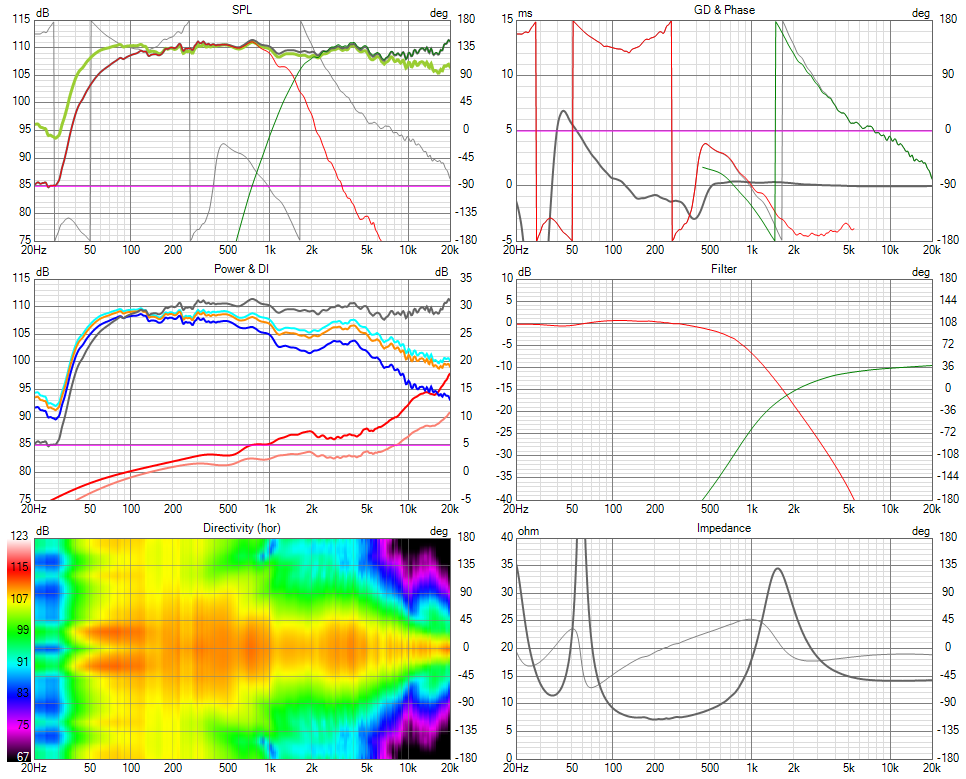




Comments
Some out of order pics.
Ok, had to correct several things and parts increased a bit.
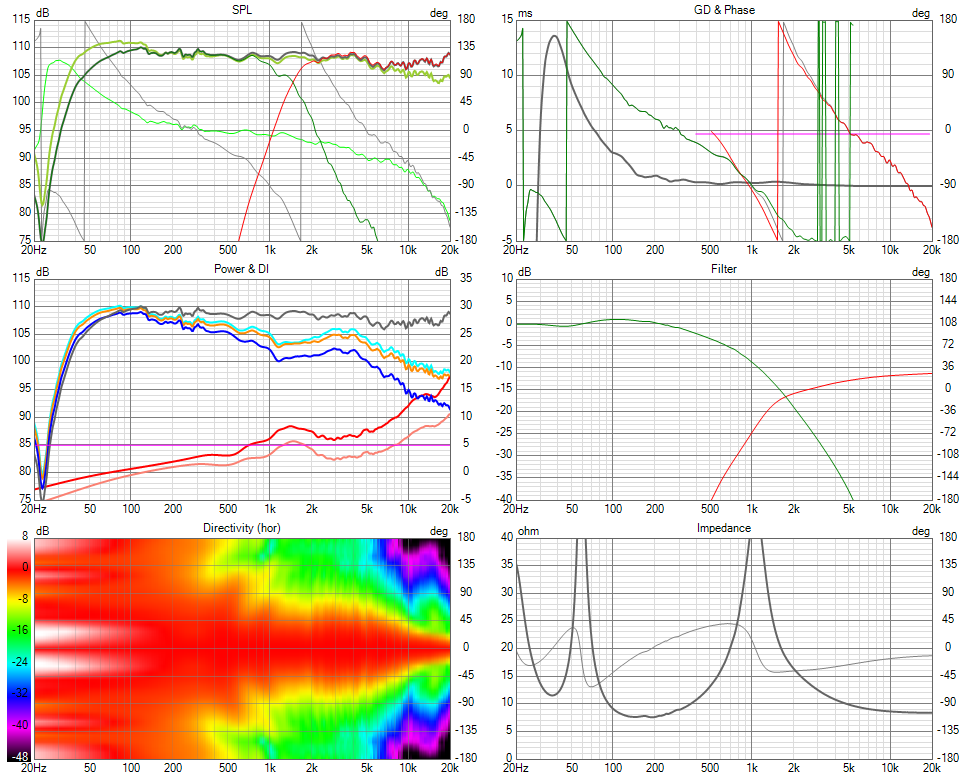
I ended up with a cap and resistor on that tweeter/waveguide. Small cap, 1.8uF if I recall correctly. Badass tweeter, I love the original XT25 but the Beast Nipple brings something extra to the table.
These are the beast ones.
Sweet. Get them dialed in you will love them.
More details on the 3D printed adapter?
https://www.thingiverse.com/thing:4714668
does my eye spy a dome beastmode mixed in there? I'd be interested to see if you had any measurements. I heard it does not do well in the wg148, but never saw any measurements that prove the issue.
Was planning to, will see if I get a chance.
Currently listening to this using eqAPO:
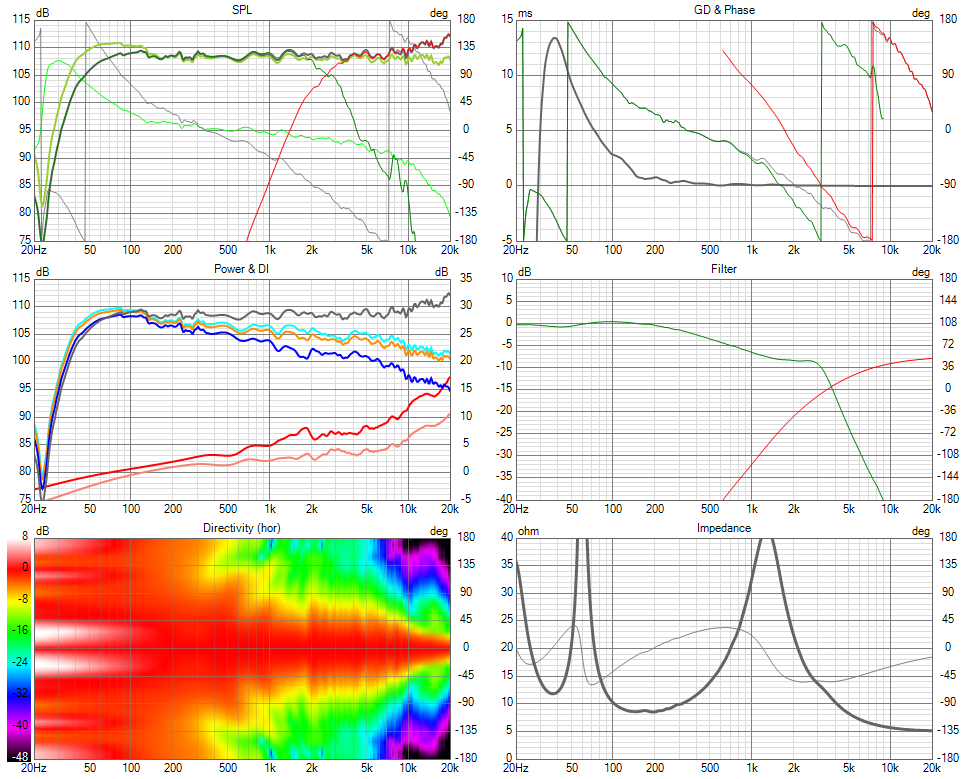
Other than 90 degrees phase mismatch between woofer and tweeter, the overall curves look good. You should see the mismatch clearly if you switch to vertical directivity chart. There is still some wacky stuff going on at low freq, likely background noise and/or low SPL of measurements causing inconsistent roll-off of the far field woofer measurements. You may want to adjust the bass balance a bit to taste, as the simulation lacks accuracy below about 150Hz.
Normalized polar chart isn't really the right view for final design. Good for comparison of different baffles, drivers, waveuguides/horns, but final speaker should include the response of the speaker. I usually view without normalization, and with contours at 3dB steps to give a clear definition of the directivity profile.
Horizontal:
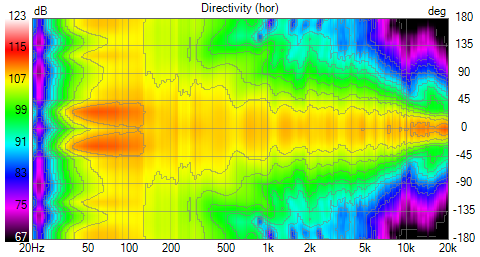
Vertical:

I hope it is clear, that the peak output through the crossover region is below 0 deg axis, vertical polar lobe is downward tilting maybe 12 deg or so as a result of phase alignment of the drivers. You can decide for yourself if it is a problem for you or not. When phase is aligned at listening axis, peak response will be aligned along 0 deg axis in the polar plot as well, ie peak of the lobe is forward facing.
Horizontal response looks very good
This avoids large caps and does not look bad.
Horizontal:
And even gets a deep reverse null for those that care:
Phase alignment is now excellent. Give 'er a listen and see what you think
Does the rising top end of the tweeter bother you? I tilted it down on one but left it on another. Thinking it's so directional at that freq that it doesn't really matter ... and my hearing up there isn't what it used to be.
I’ve landed in a similar top octave response on several of my own speakers, it does not bother me. I’ve found the listening window average to be a much more useful metric for tuning than a single axial response. If tuning for flat on axis, any listening position other than straight on tweeter pointed at your face will have a drooping top octave (all other traces on power & di chart will droop), tuning with a bit of a lift provides better balance in normal listening situations. As well, most old farts will struggle to hear what’s going on up there anyway, so a little boost should be welcome.
For listening window, tuning with a slight downward tilt about -0.15 to -0.2dB/oct is welcome, for Silver1omo's speaker, if anything I'd simply drop the level of the entire spectrum >1.5kHz by 1dB.
I've redefined 'Super-Tweeter Range' to frequencies above 12kHz... and that range may come down in a few more years
That rising is only on axis, as soon as 10° it flattens and at 20° it starts to slop down a bit.
Had the parts for the tweeter xo, so, biamp it is.
Active to the woofer and passive to the tweeter.
Took another look at the port nearfield FR and saw a spike at ~1.3khz and remembered the port drilling mod that Scott shared, so, I had to test it.

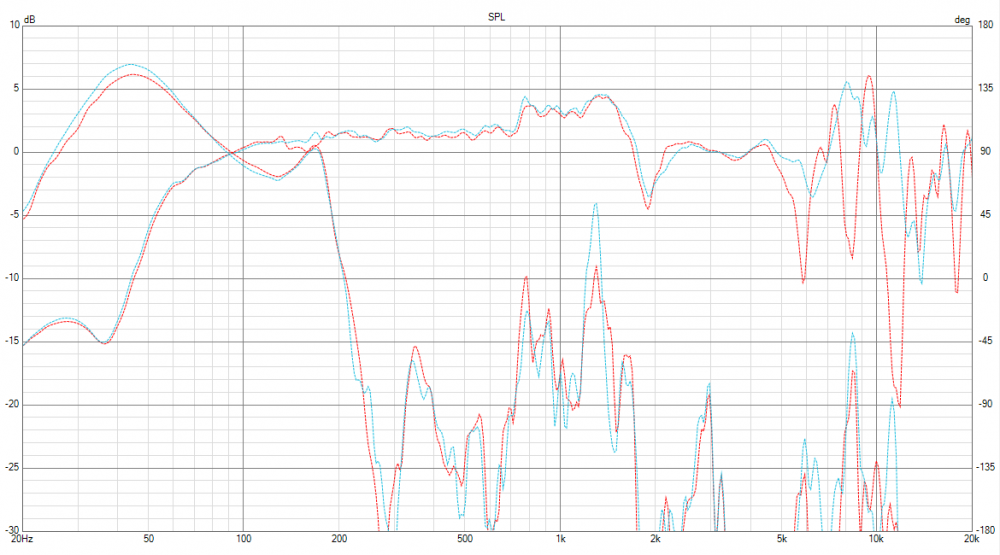
Red is modded, blue is not:
Measured at ~2.2v. I find interesting how the 6k, 8k and 11k dips of the modded port do show in the woofer nearfild, but not the 1.3k one.
Are you talking about me again?
You and a few other old farts I've know
OK, just checking
XT25 vs DX25
Finally get to see it!! awesome thanks!
Hmm. DX25 doesn't seem so awful. Not amazing, but still seems workable?
That mirrors my experience with both drivers in that waveguide. I ended up using a 1.8uF cap and a padding resistor on my build.
I hope to test the DX25 in some of the Augerpro waveguides someday. I love that tweeter.
I'm planning to